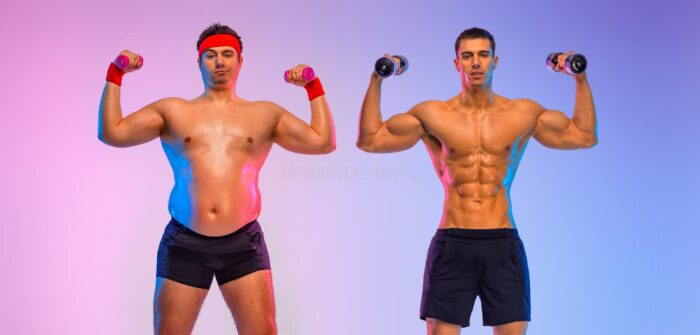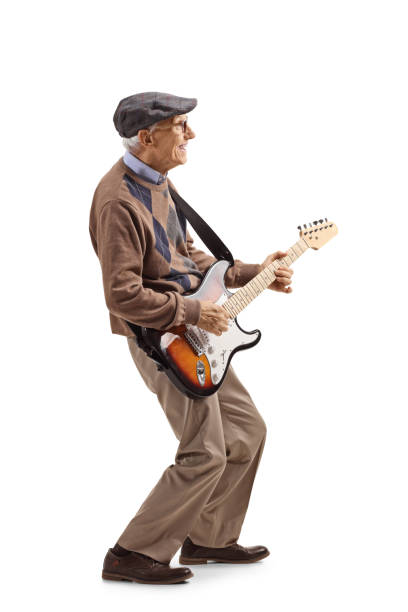Simon Khinda, a 40-year-old lawyer from Southern California, looked down and realized he had a “dad bod.” Looking for a reset, he went all out. Here, he tells Men’s Health how he did it.
By Jesse Hicks Jul 26, 2022
This article is a repost which originally appeared on Men’s Health
Edited for content. The opinions expressed in this article may not reflect the opinions of this site’s editors, staff or members.
Our Takeaways:
· Men can possess high levels of body fat without appearing overweight.
· Maintaining a high level of protein intake is important when attempting fat loss.
· Excellent form with your exercises will give you more results with less risk of injury.
Simon Khinda, a 40-year-old lawyer from Southern California, looked down and realized he had a “dad bod.” Looking for a reset, he went all out. Here, he tells Men’s Health how he did it.
I always thought I was in pretty okay shape. I would intermittently go to the gym, sometimes getting into fad workouts—my waist was at 31 inches and I figured I was doing fine. One day my daughter said to me, “I love you, papa, and you’re squishy!” I realized I had the infamous “dad bod.”
It was an eye-opening moment. I thought I was in generally good health. That said, I don’t really think I ever appreciated what “good health” meant, since I was not surrounding myself with people who were in excellent health. I’d never had obvious issues, and I didn’t lack confidence in myself. At the same time, my sleep was terrible; I had an overactive mind and I was constantly stressed out. So overall I hadn’t really been taking care of myself, even as I thought getting to the gym occasionally was enough.
I signed up for a transformation program with Ultimate Performance in Los Angeles. One of the first things that happened was meeting my trainer, Chris, who checked my body fat. I thought it would maybe be 20%. It was pretty crushing when Chris told me that actually, I was at 30.1%.
I’m from a big foodie family; I actually trained informally in Italian cuisine. Revamping my diet, then, meant cutting out all starchy carbs: no more rice, bread, pasta, or potatoes. I started in November, and dodging comfort foods around the holidays was challenging. I learned to monitor my macros, something I hadn’t paid attention to before. I aimed for 160 grams of protein, 50 grams of carbs, and 65 grams of fat per day.
So on a typical day, I’d start with eggs with smoked salmon or cottage cheese, or other protein alternatives. Lunch and dinner would be lean protein like chicken or white fish and veggies; I had veggies with every meal while still watching my macros. I really love to cook, but I also recognized that Costco was a real help for getting pre-marinated chicken, fish, meats (cooked and uncooked), and bulk veggies—it makes it so much easier to through together a meal. For snacks, I had Epic Bars and nuts. Or protein shakes, a perfect dessert fix for my sweet tooth.
That was a big change from my previous diet, where I’d usually have cereal or eggs and toast, a sandwich for lunch, and often rice with curry or pasta for dinner. Three or four nights a week would be a restaurant dinner, which I thought was healthy. I cut back on all of that and revamped my diet. I also cut out alcohol, which I know can have a big effect.
The closest UP gym was almost 70 miles, so I was doing 140 miles round-trip to get there. I’d work with Chris once a week in person, then four more times using his workout plan. We made it work! Chris really helped me understand good form and the importance of being careful with your exercise. Whatever habits I’d made in the gym were things I’d picked up from other people around me, and I realized that’s not the best way to go. Tempo and form are so important.
Chris is also very strict about doing pure reps. There is no such thing as impure reps, bouncing, or cheating. If you can’t do a pure rep then it doesn’t count. You either decrease the weight or stop as you have hit the limit. I cannot evangelize about this enough.
A lot of people want to know how I stayed motivated and how I found time in the day to be so committed. I don’t have an answer other than that if this is something important to you, you’ll find the time. I have a 4-year-old daughter and my wife got pregnant as I started this journey, so believe me, my time was limited. But I made it work, including tricks like walking around while on the phone to get my 10,000 steps in.
The transformation took me 22-23 weeks. Over that time, I lost 27 pounds and gained 13 pounds of lean muscle. I dropped from 30.1% body fat down to 9.8%. When I had my photoshoot, I weighed 144 pounds.
I said I felt pretty confident in myself before this transformation, but afterward, my confidence shot through the roof. I have much more energy to play with my daughter. My physical with my doctor was amazing. I sleep a hell of a lot better, and I feel much more virile!
I got rid of the “dad bod” and the fat, so I had the total body recomposition I wanted. Now I’m learning how to go back to a healthier me, where I can eat pasta and rice etc., have the occasional drink, but all without jeopardizing my health and regressing. I needed the “reset” that the transformation gave me, and now I’m looking forward to a new and sustainable lifestyle.
That was important to me, and I think for anyone who feels similarly, the key is to set clear goals. Whether that means working with a trainer or on your own, clearly lay out the steps you need to get where you’re going. Then just take it one step at a time.








